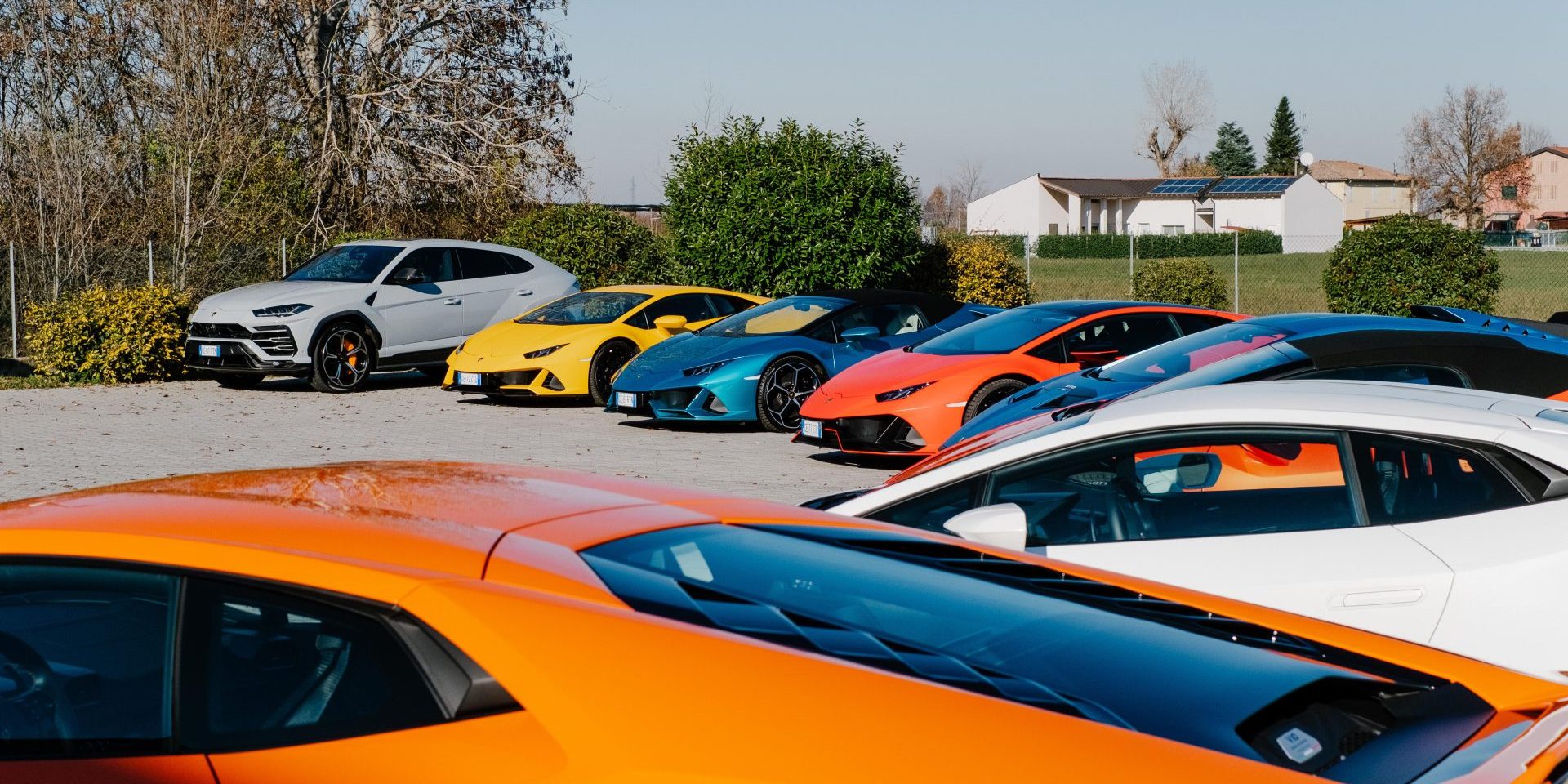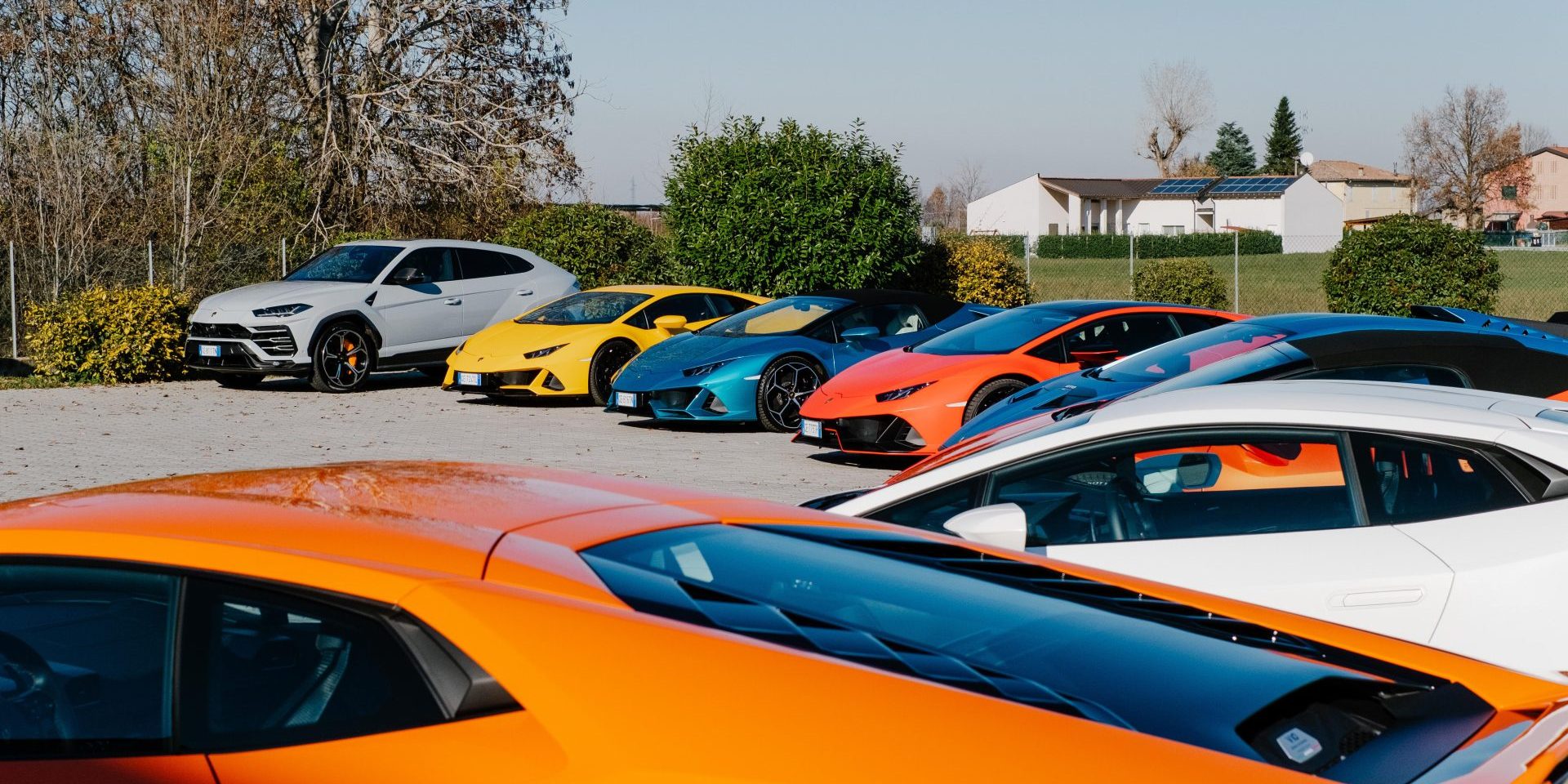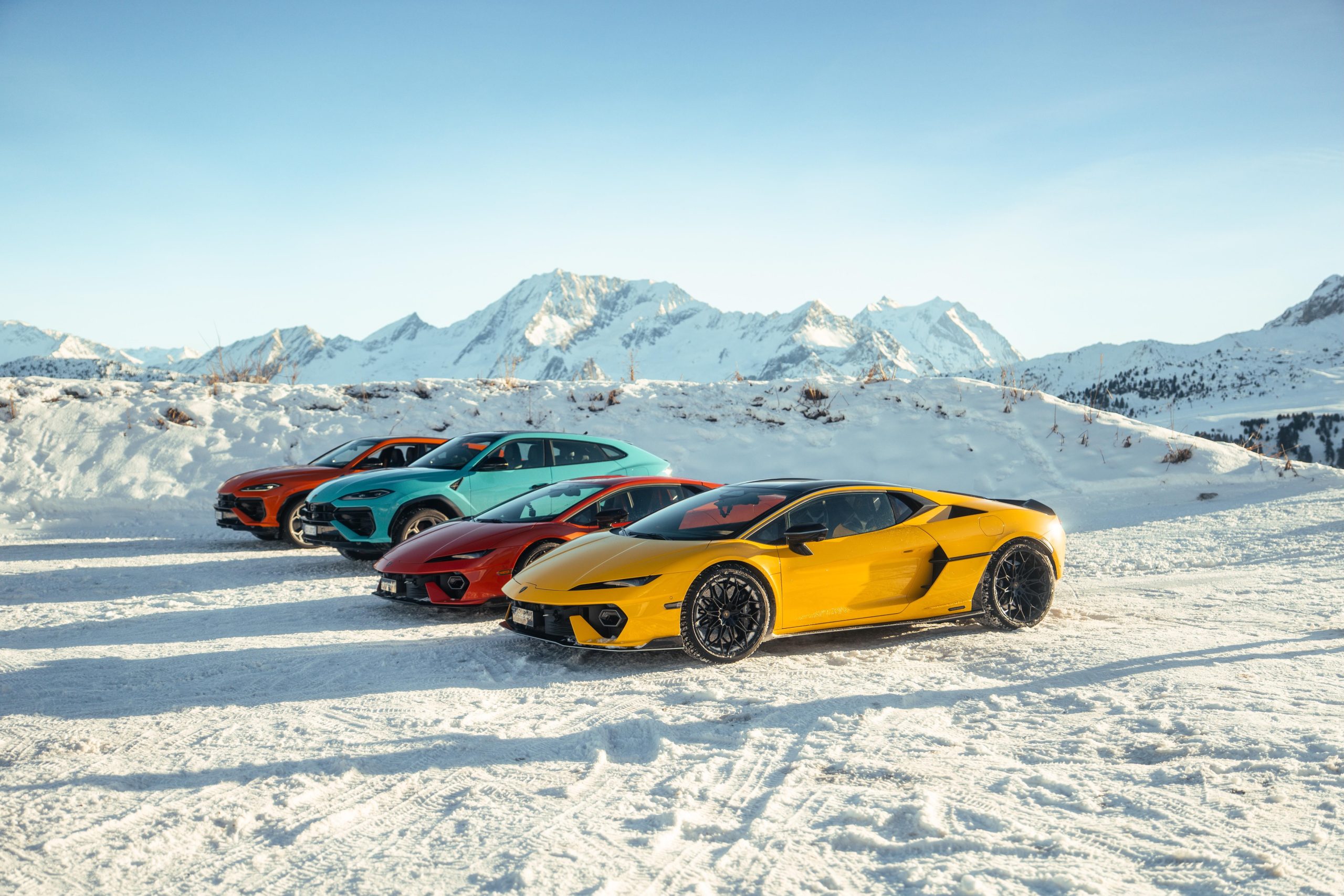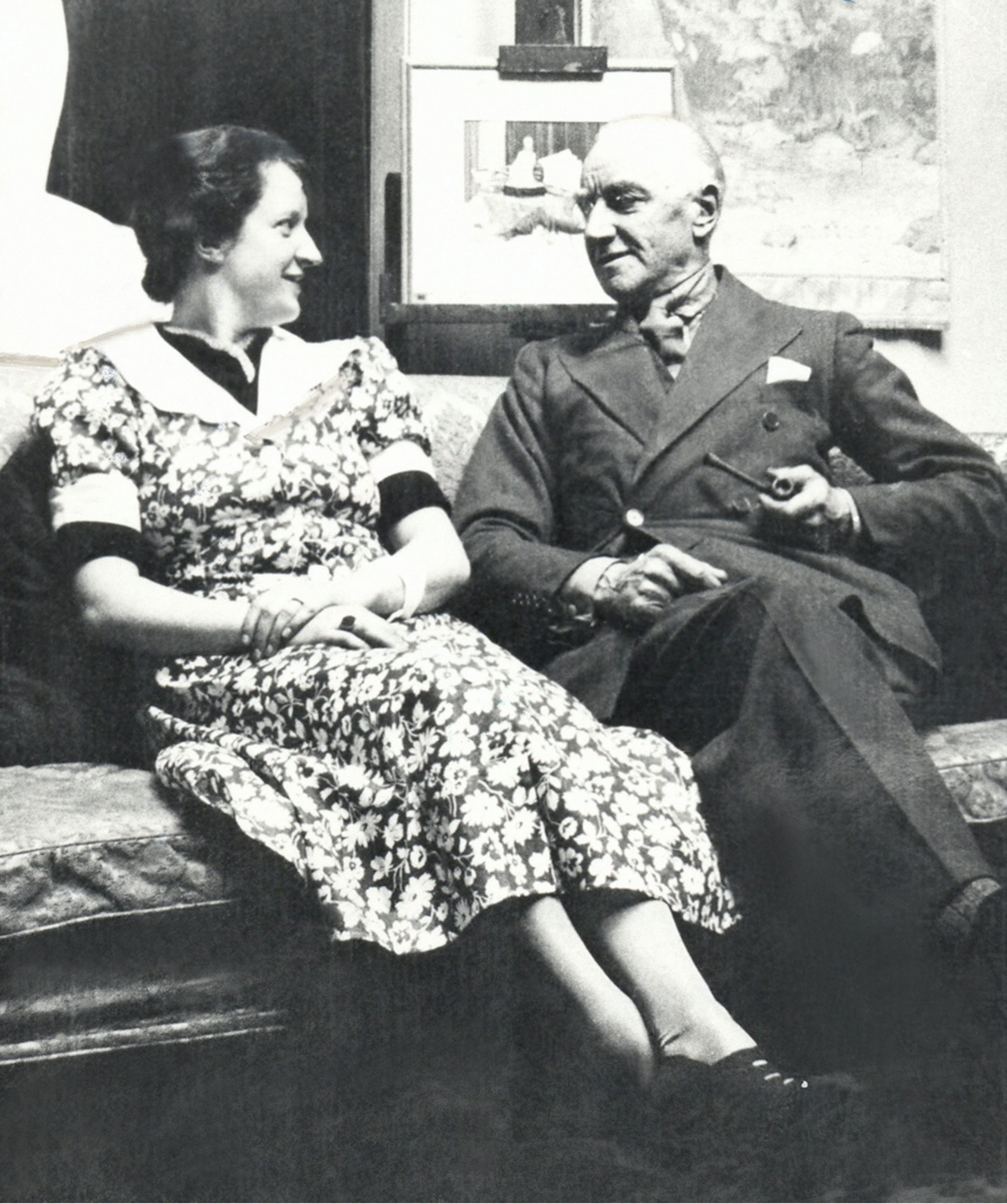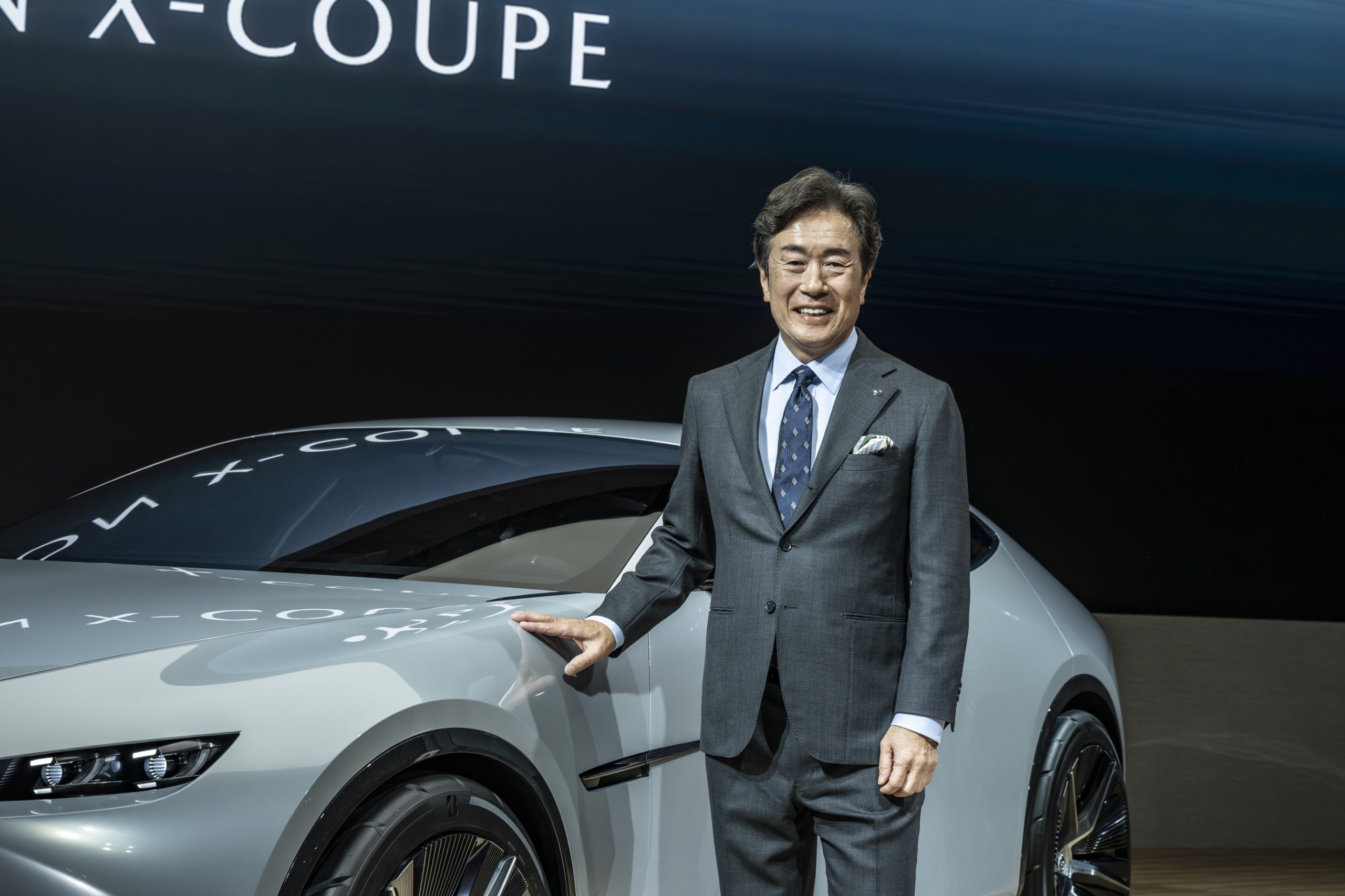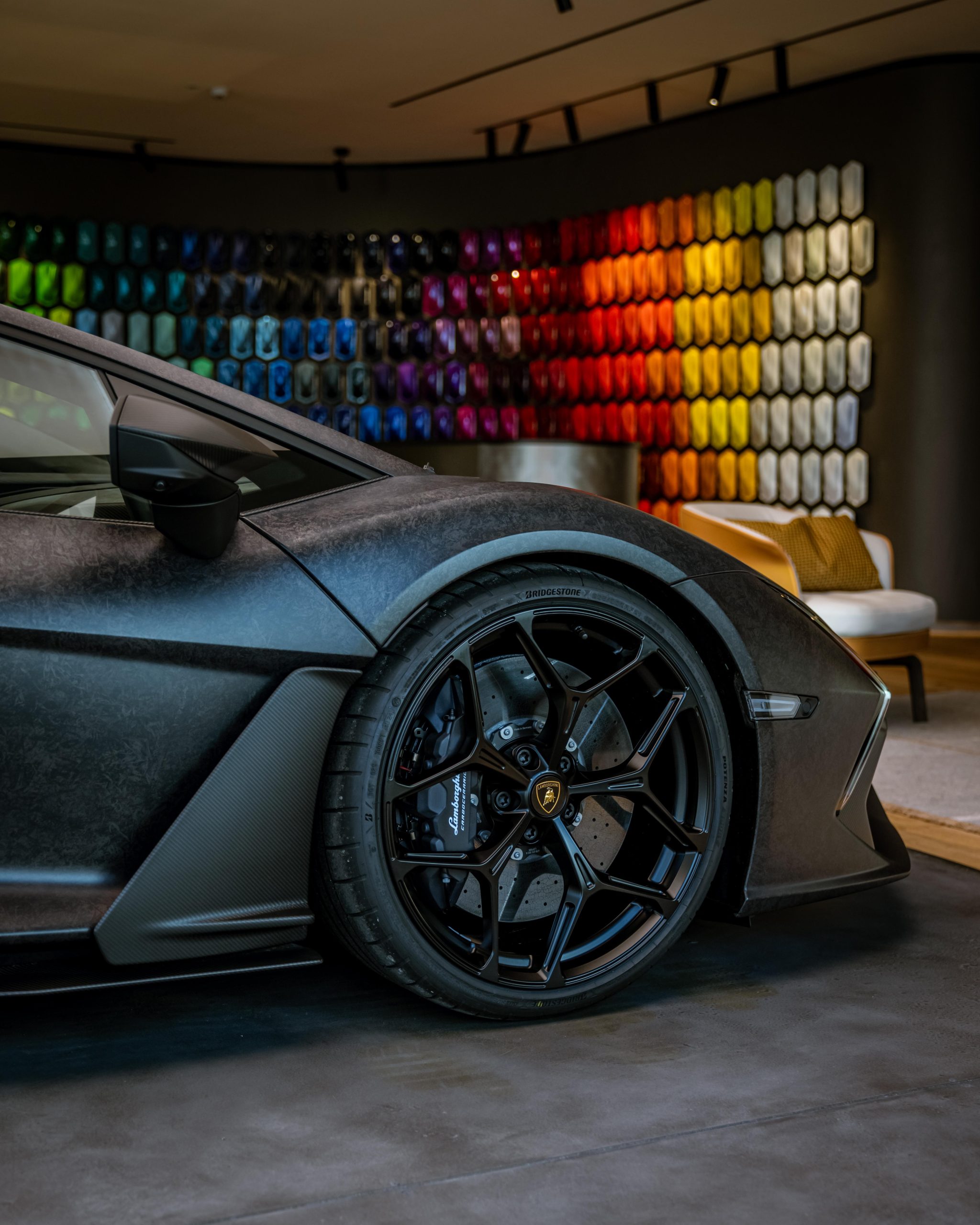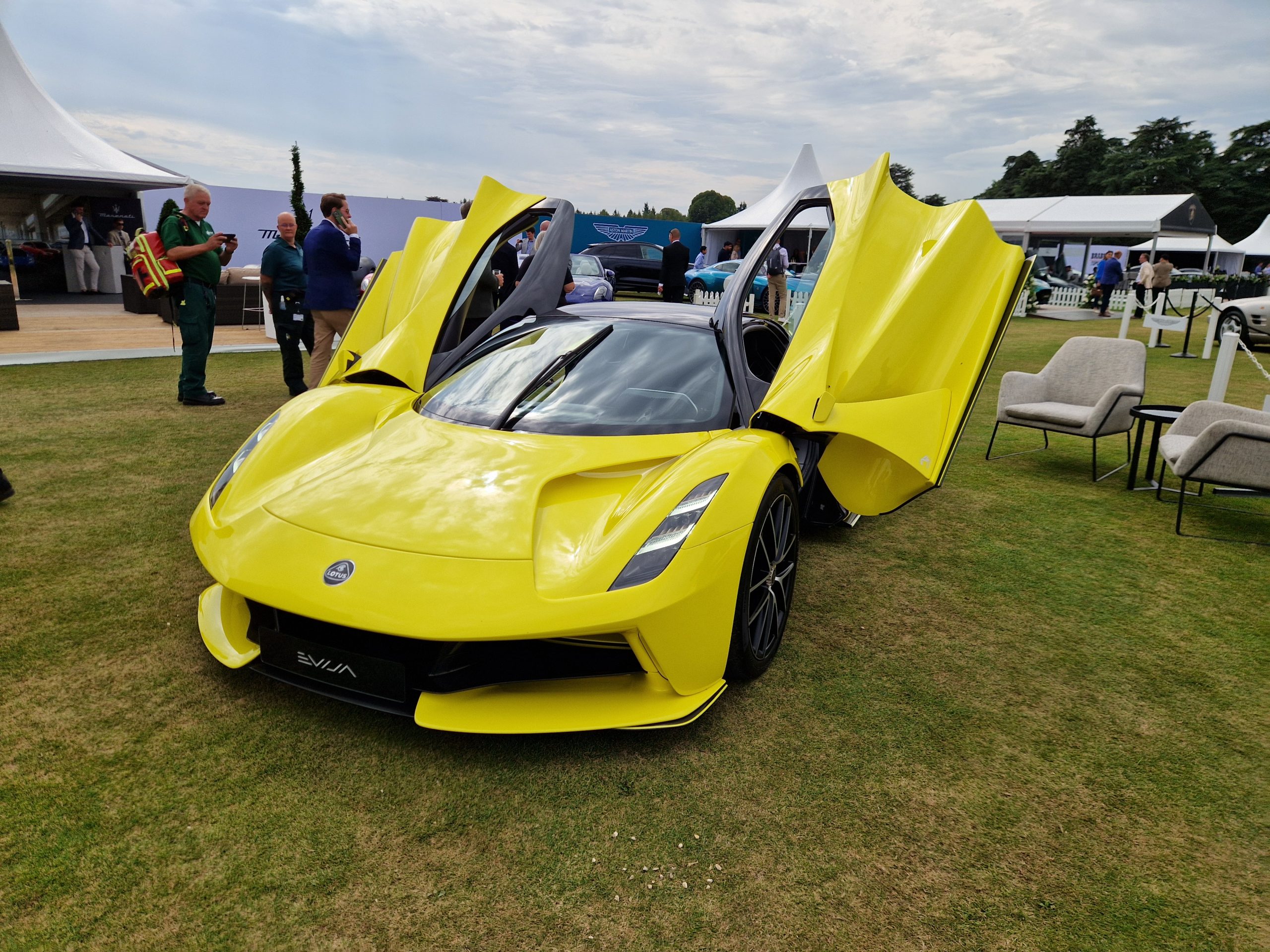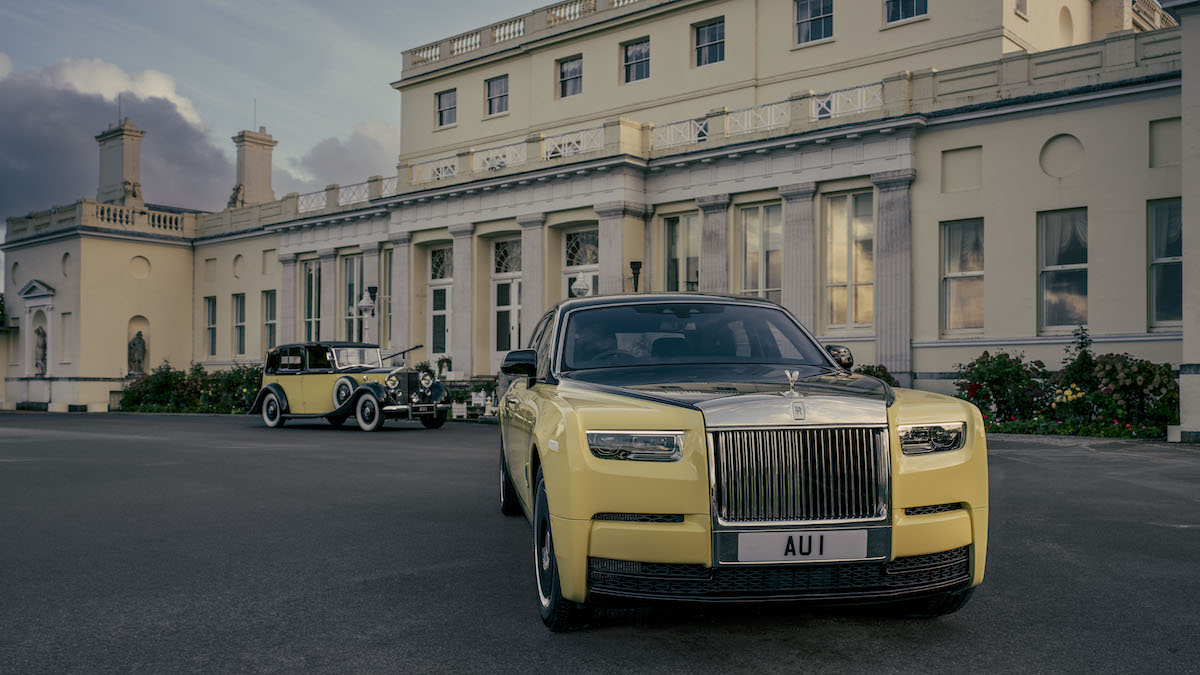From their audacious styling to the symphonic roar of their engines, Lamborghinis offer more than just transportation; they represent a lifestyle, an aspiration, and a piece of modern art on wheels. The legacy of the brand is built on a series of vehicles that don’t just break the mould but redefine the boundaries of what a supercar can be.
As we explore the most iconic Lamborghinis, their stories interweave with the evolution of automotive design and technology, leaving an indelible mark on the fabric of car culture.
10) Lamborghini Veneno
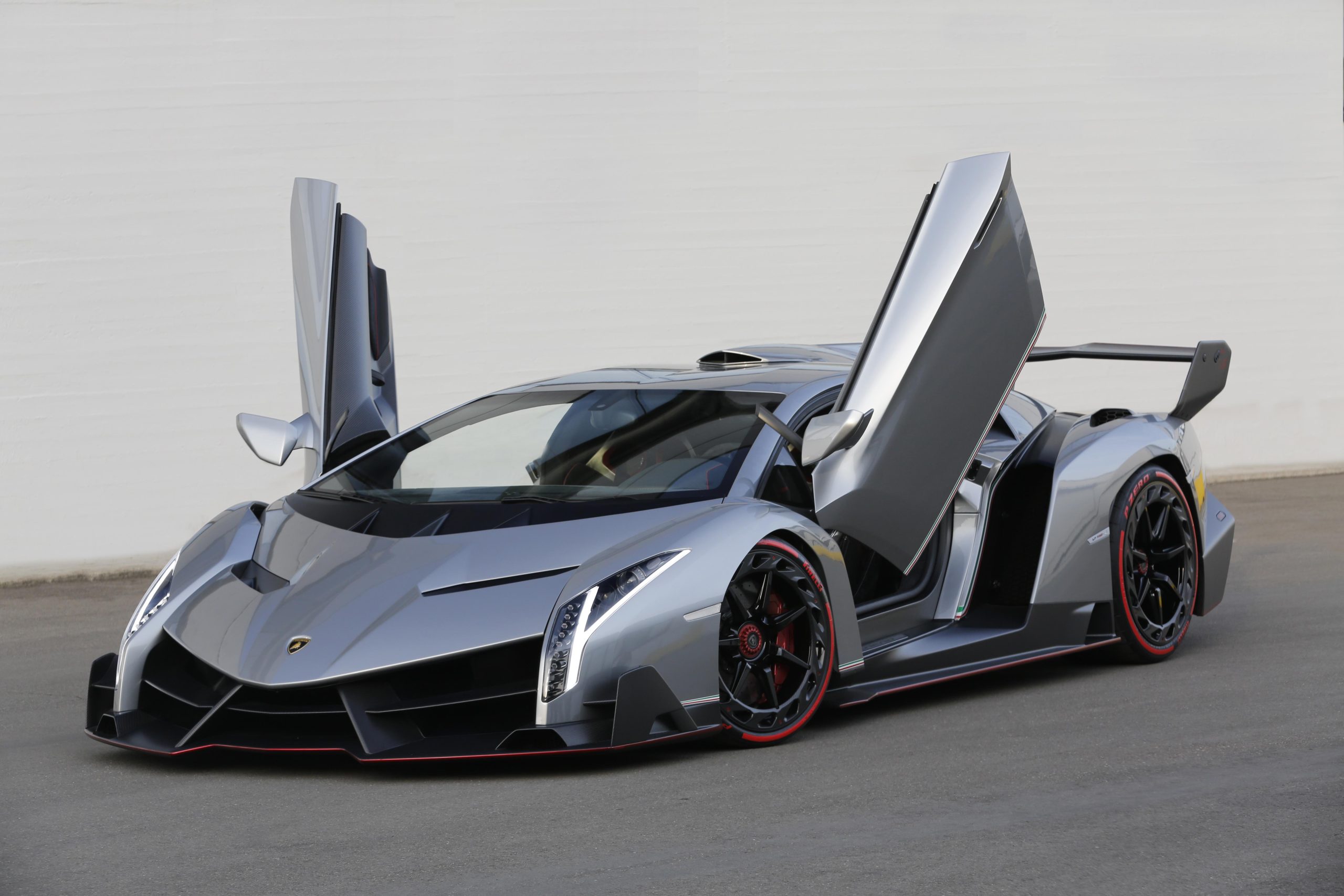
The Lamborghini Veneno is a testament to Lamborghini’s dedication to performance and design, created to commemorate the company’s 50th anniversary. Revealed at the 2013 Geneva Motor Show, the Veneno is a highly exclusive model, with only a handful of units produced, which includes both coupés and roadsters. This rarity is reflected in its initial price tag of $4 million, placing it among the most expensive production cars at its debut.
This vehicle takes the Aventador’s foundations and elevates them with a focus on advanced aerodynamics and stability for a racing-inspired experience, still tailored for road legality. The Veneno’s design is instantly recognizable, with sharp, angular lines and an aggressive stance. Its frame incorporates carbon fibre extensively, which contributes to a reduction in weight and enhances its performance capabilities.
The interior of the Veneno is as striking as its exterior, with innovative materials and craftsmanship that reflect Lamborghini’s dedication to luxury and performance. With only a select number of examples existing worldwide, the Lamborghini Veneno holds a rare space in automotive history as one of Lamborghini’s most remarkable and desired models.
9) Lamborghini Sesto Elemento
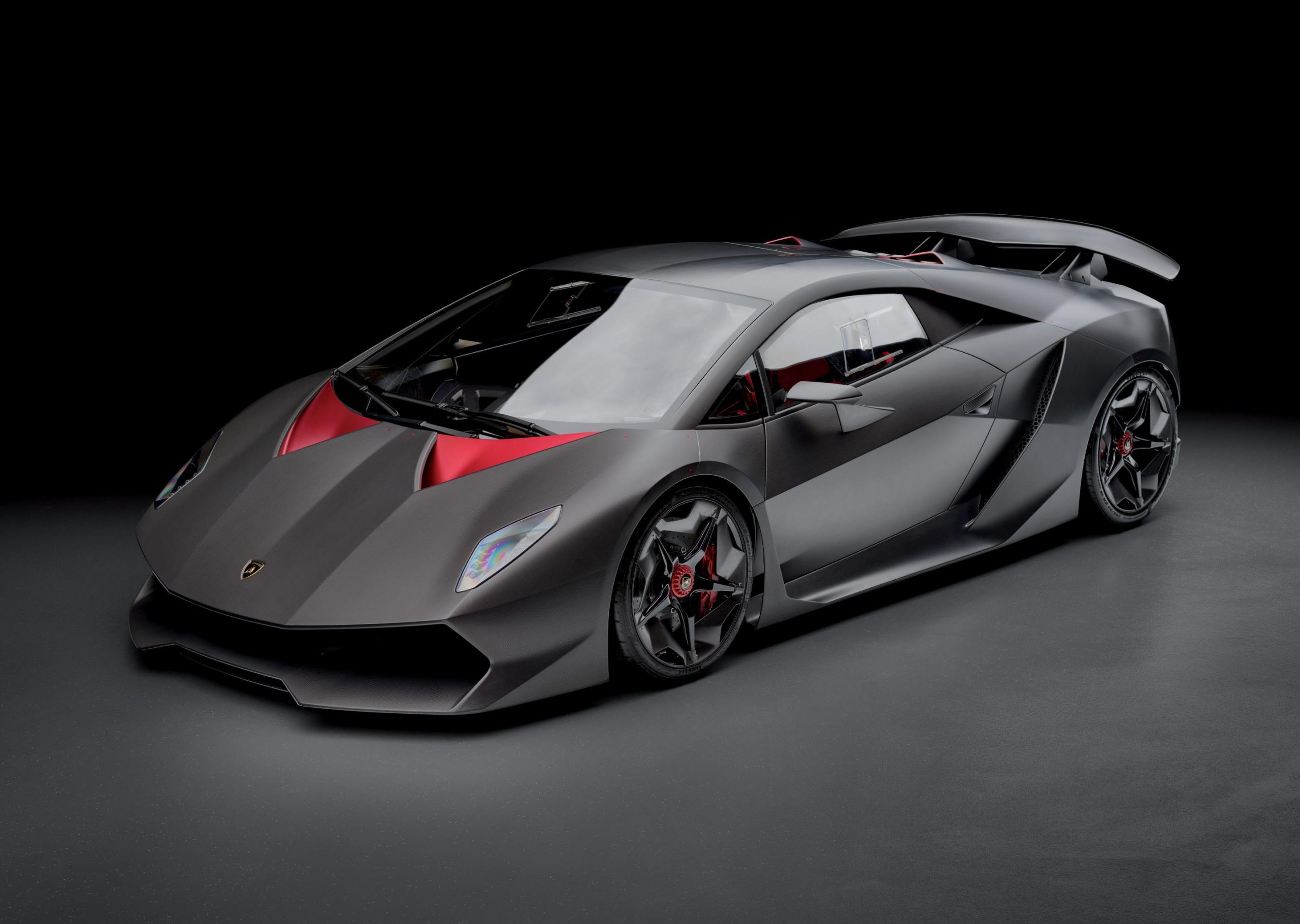
The Lamborghini Sesto Elemento boasts a rare blend of lightweight design married with exceptional performance, a hallmark of Lamborghini’s engineering prowess. Weighing a mere 999 kg due to its extensive use of carbon fiber, this supercar demonstrates significant advancements in material science and automotive design. The Sesto Elemento is propelled by a 5.2-liter V10 engine, a powertrain it shares with the Gallardo Superleggera, facilitating a breakneck acceleration from 0 to 100 km/h in a startling 2.5 seconds.
Lamborghini produced the Sesto Elemento in a very limited series, with only 20 units intended exclusively for track use, reflecting the brand’s commitment to exclusivity. Each unit came with a hefty price tag of US$2.92 million at its time of release. The vehicle’s performance specs further cement its position in Lamborghini’s storied legacy, with a power output of 570 CV and an impressive power-to-weight ratio of 1.75 kg/CV.
The Sesto Elemento’s design elevates Lamborghini’s aesthetic language, integrating functionality into its striking appearance. With an impressive top speed of 356 km/h (221 mph), the Sesto Elemento stands as a remarkable example of Lamborghini’s dedication to pushing the boundaries of speed and style. Its limited production and exceptional capabilities make it a significant chapter in the narrative of iconic Lamborghinis.
8) Lamborghini Reventón

The Lamborghini Reventón, introduced at the 2007 Frankfurt Motor Show, is a limited-production masterpiece built upon the robust foundations of the Lamborghini Murcielago. With only 20 units sold to the public and one extra unit created for the Lamborghini museum, exclusivity defines this model. The Reventón incorporates a mid-engine layout, ensuring agile performance, while its design pushes boundaries with sharp, futuristic lines.
Developed by Centro Stile Lamborghini, the style division established three years prior, the car’s appearance is distinguished by its matte finish and assertive design language. It draws on inspiration from aeronautics, evident in its aerodynamic shape, reminiscent of stealth jets. With no appearances in film or significant pop culture media, the Reventón is nonetheless a vehicle that has made a lasting impression on automobile enthusiasts and collectors, cementing its status as a significant chapter in Lamborghini’s history.
Supercar aficionados appreciate the Reventón for its performance capabilities, which are powered by a 6.5-liter V12 engine that unleashes significant power, matched with an assertive exhaust note that captivates the senses. Though the Reventón’s production numbers were low, its influence endures, serving as a precursor for future limited-edition models from the Italian marque, symbolizing the pinnacle of exclusivity and design prowess at Lamborghini.
7) Lamborghini Huracán
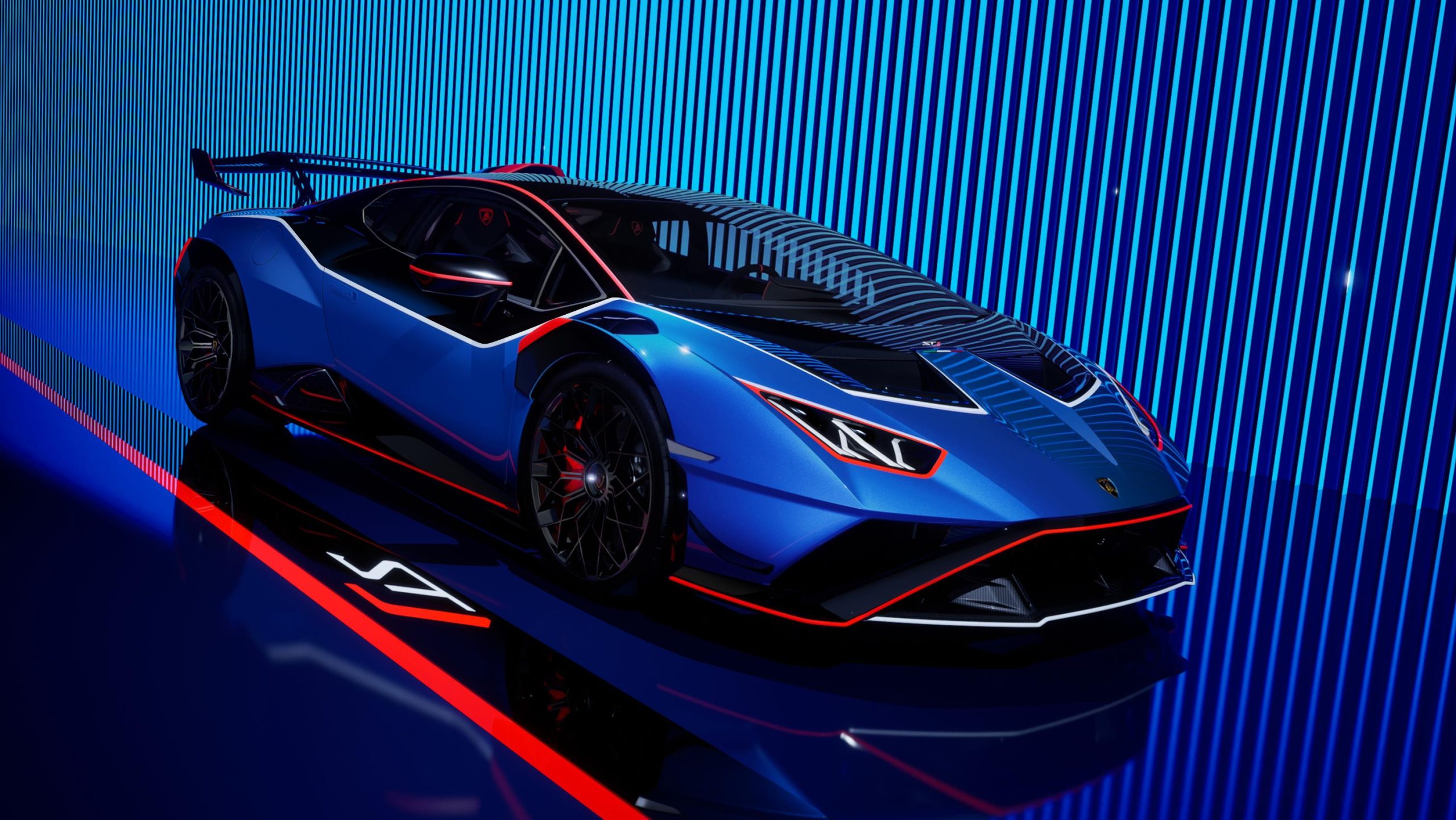
The Lamborghini Huracán has made a profound impact as a cornerstone model for Lamborghini. It traces its roots to the Gallardo, inheriting the legacy of its V10 engine, renowned for its dynamic performance and distinctive sound. With a powertrain housing a naturally aspirated V10, the Huracán has found favor with supercar enthusiasts who appreciate the raw intensity and directness of an unadulterated driving experience.
Lamborghini’s commitment to performance and style is exemplified in the Huracán’s design. The vehicle’s sharp angles and aggressive stance make it immediately recognizable as part of the esteemed Italian marque’s lineup. It isn’t just an attractive piece of engineering; the car’s aerodynamics are shaped for both form and function, contributing to its breathtaking driving dynamics.
With the introduction of the Huracán STJ, Lamborghini cements the model’s legacy by combining the prowess and characteristics of its race-bred counterparts with the adaptability and excitement of a road car. This edition honours Lamborghini’s Super Trofeo series through its nomenclature while integrating race-derived components for enhanced performance. The STJ iteration is a graceful farewell to a chapter in Lamborghini’s history, marking the finality of the Huracán series with significant mechanical improvements, such as an upgraded gearbox and enhanced grip through race-inspired suspension adjustments.
6) Lamborghini Aventador
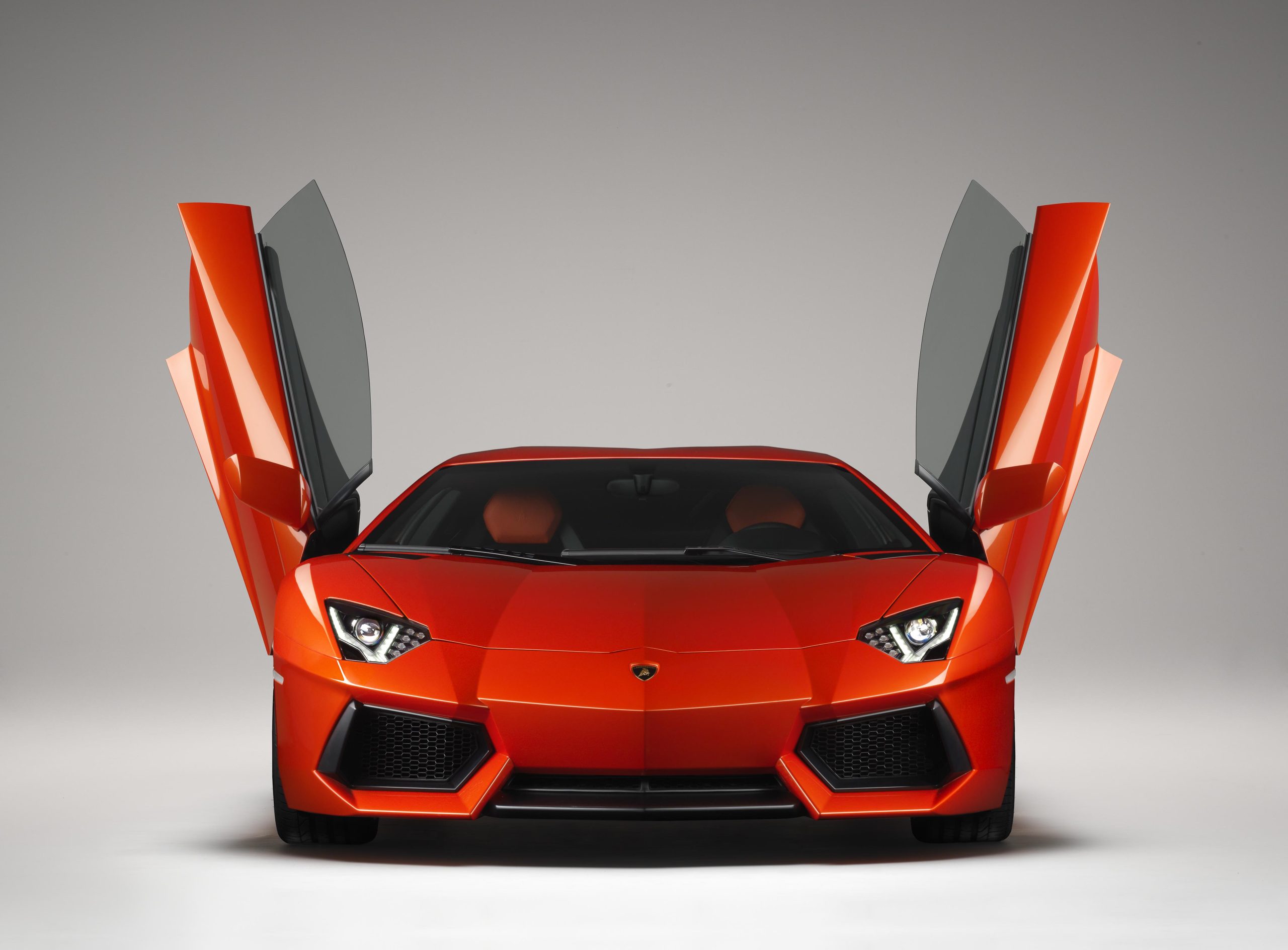
The Lamborghini Aventador, a successor to the Murciélago, stands as an icon of Lamborghini’s commitment to advancing performance and design. Introduced in 2011, this supercar features a mid-mounted 6.5-liter V12 engine that is both powerful and responsive. Producing up to 740 horsepower, the Aventador achieves remarkable acceleration and top speeds, appealing to enthusiasts and collectors alike.
Lamborghini incorporated sophisticated technology in the Aventador, such as the LDVA (Lamborghini Dinamica Veicolo Attiva) system. This feature provides an unparalleled driving experience by dynamically adjusting to the vehicle’s movements, optimizing its aerodynamics and handling. The Aventador continues the brand’s legacy of producing visually striking automobiles. Its design is distinguished by assertive lines and shapes that evoke a sense of speed and agility even when stationary.
The Aventador lineup has seen several iterations, each refining the blend of raw power with technical improvements. As Lamborghini’s flagship, it carries on the lineage of the S models, symbolizing the brand’s relentless pursuit of automotive supremacy. The Aventador, with its iconic status and V12 heritage, encapsulates the essence of Lamborghini’s design philosophy and engineering brilliance. Its ongoing presence in the automotive market underscores its substantial impact and enduring appeal.
5) Lamborghini Gallardo

The Lamborghini Gallardo, produced from 2003 to 2013, signifies a pivotal period for the celebrated Italian manufacturer. As Lamborghini’s best-selling model of its time, the Gallardo amassed a total production of 14,022 units, which speaks volumes about its popularity. The model was significant for being the second major release after Lamborghini became part of the Audi family, marking a fusion of Italian flair with German engineering.
This sports car derives its name from a breed of fighting bull, consistent with Lamborghini’s tradition of bull-inspired nomenclature. Equipped with a V10 engine, the Gallardo offered a remarkable balance of power and drivability, making it a cherished option for enthusiasts and collectors alike. Its performance credentials are highlighted by the Superleggera version, which boasts a reduction in weight, an increase in power to boost performance, and the ability to sprint from 0 to 100 km/h in a mere 3.8 seconds, achieving top speeds around 315 km/h.
Stylishly designed with sharper lines and an aggressive stance, the Gallardo cemented its legacy as an integral part of the Lamborghini lineage. Its wide array of models, including the Superleggera and Spyder variants, offered consumers diversity in style and driving dynamics. Through its decade-long production run, the Gallardo maintained its status as a highly desired supercar, shifting the trajectory for Lamborghini and setting the stage for subsequent models.
4) Lamborghini Murciélago
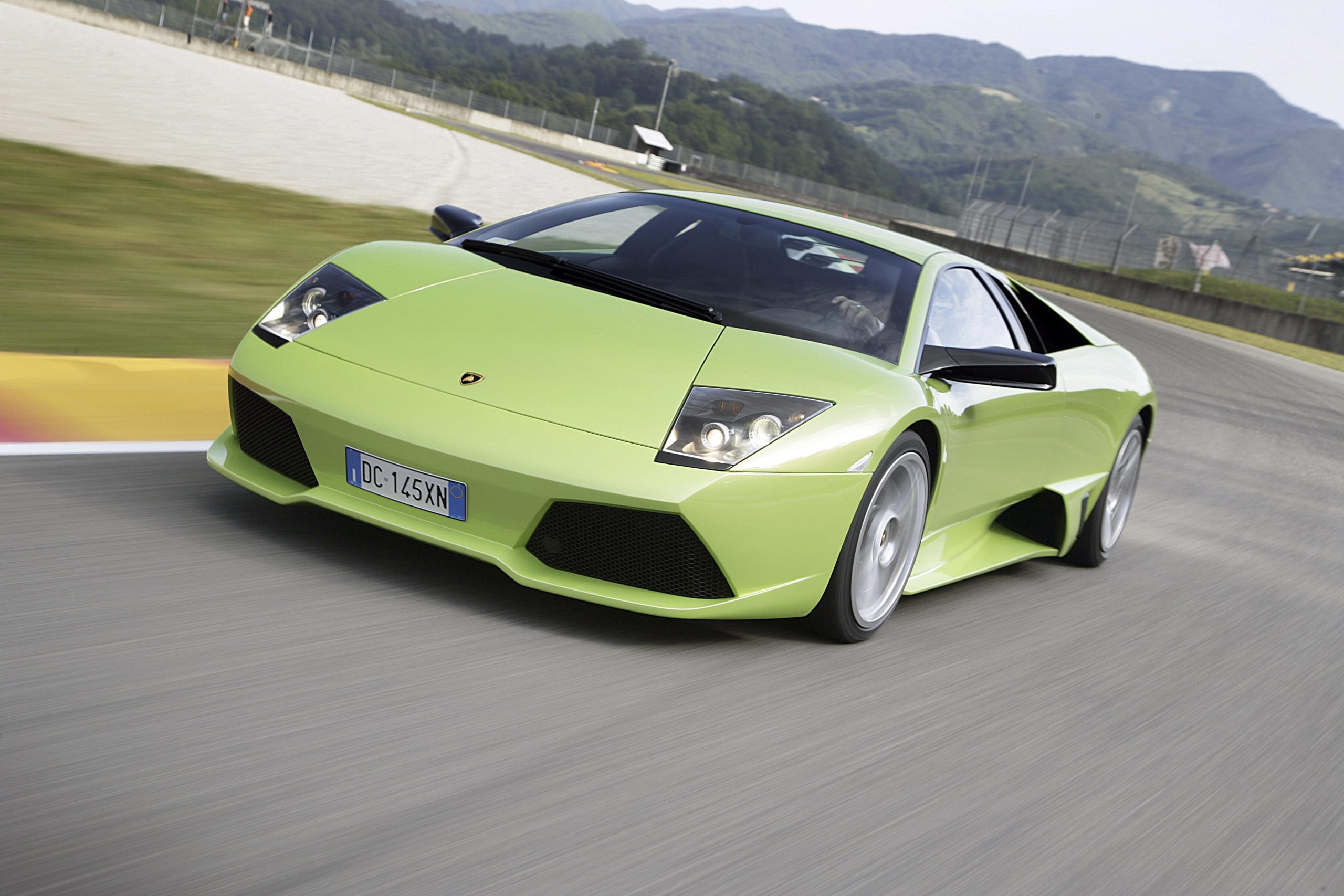
The Lamborghini Murciélago marked a significant period in Lamborghini’s history when it debuted in 2001. As the successor to the Diablo, it anchored Lamborghini’s position in the high-performance supercar segment. Housing a potent 6.2-liter V12 engine at launch, it was later increased to 6.5 liters in subsequent versions, enabling this remarkable machine to garner the attention and praise of enthusiasts worldwide.
This model was distinct for its combination of sharp lines and surfaces that were reminiscent of past Lamborghini icons like the Miura and Countach. It was not merely a tribute; the Murciélago evolved those characteristic designs into a contemporary form. With its scissor doors and low-slung silhouette, it easily became one of the most recognized cars of the brand.
Over its lifecycle, the Murciélago saw several enhancements and special editions, such as the LP 670-4 SuperVeloce. This variant was particularly noted for its extensive aerodynamic redesign and increased power, culminating in a fitting conclusion for this chapter of Lamborghini’s V12 legacy. The Murciélago thus stands as a significant chapter in Lamborghini’s storied tradition, bridging the past with the modern era and shaping the company’s future direction.
3) Lamborghini Diablo
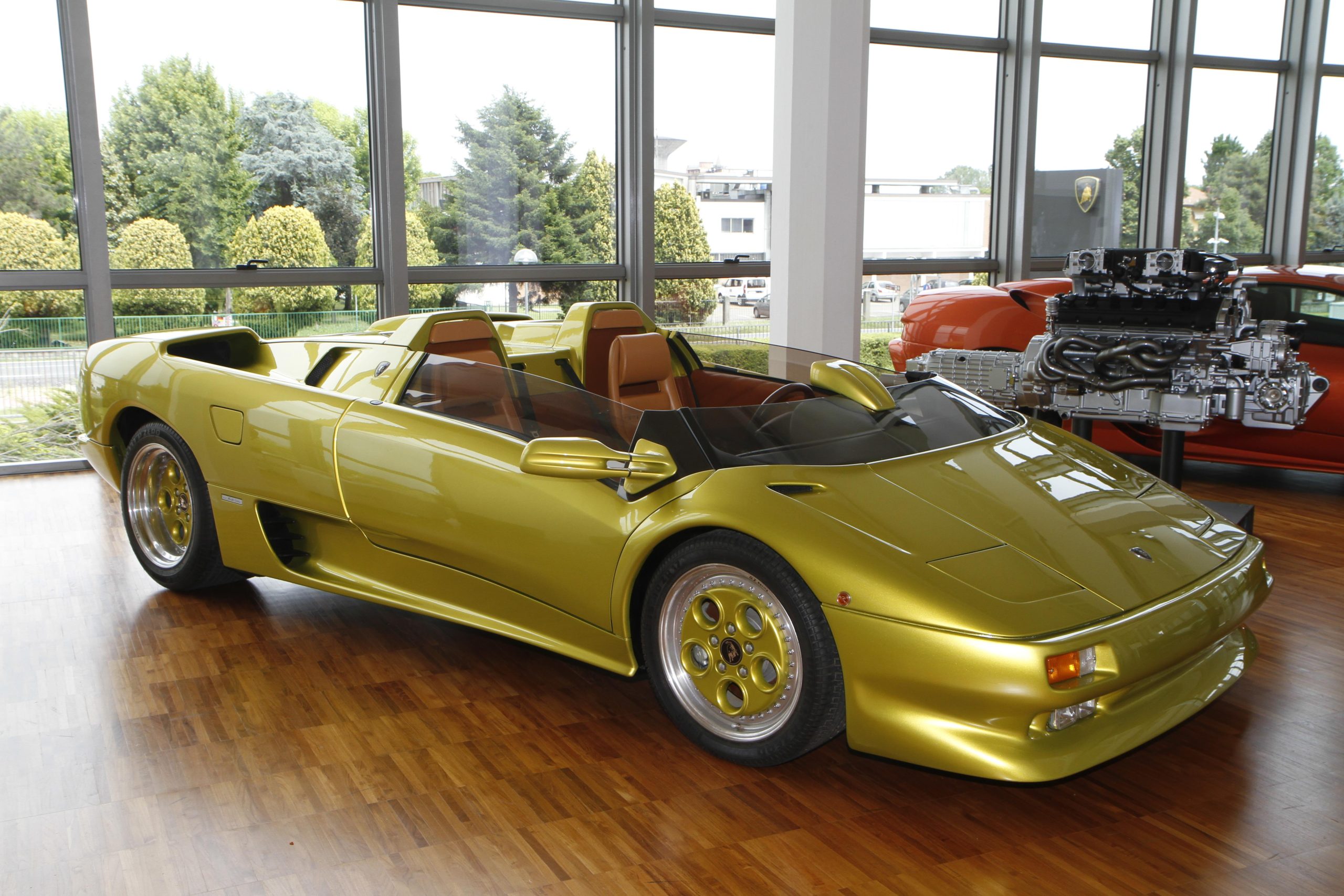
Introduced in 1990, the Lamborghini Diablo succeeded the Countach as the brand’s flagship model. Its design was an evolution of its predecessor, showcasing sharp angles and the distinctive scissor doors that became a hallmark of Lamborghini’s V12 models. Under the hood, the Diablo boasted a 5.7-liter V12 engine that delivered 485 horsepower and 428 lb-ft of torque.
The Diablo’s capabilities on the road were impressive, with a top speed of 202 mph and the ability to sprint from 0 to 62 mph in just 4.5 seconds. Throughout its production run, several variants of the Diablo were created, including the SE30— a special edition that marked Lamborghini’s 30th anniversary. This model was lighter and more performance-focused than the standard Diablo.
In later years, the Diablo saw further developments, such as the introduction of a 6.0-liter V12 in the Diablo GTR. This engine upgrade pushed the power to 590 horsepower. Along with mechanical enhancements, the GTR variant featured a stiffer chassis with an integrated roll cage and was equipped with a large rear wing that contributed to its aerodynamics and distinctive appearance.
As Lamborghini’s flagship through the 1990s, the Diablo played a key role in the company’s history, representing their capacity for engineering high-performance vehicles that captivated car enthusiasts around the world.
2) Lamborghini Miura

The Lamborghini Miura, created by the Italian automaker between 1966 and 1973, set precedents in the segment of sports cars. This model was pivotal, introducing the rear mid-engined two-seat configuration in production road cars following René Bonnet’s Matra Djet. Lamborghini’s engineers, including the notable Gianpaolo Dallara, opted for the transverse engine layout, a decision that played a significant role in the car’s performance attributes.
Powered by a 3.9-liter V12 engine, the Miura’s power output was formidable, with figures around 350 horsepower, enabling it to reach 60 mph from a standstill in approximately 6.3 seconds, and attain top speeds nearing 163 mph. These impressive performance statistics secured the Miura the title of the fastest production car at the time of its release.
The Miura’s contribution to automotive design and engineering extends beyond its technical specifications. Its visual appeal matched its performance capabilities, leaving a lasting impression on both enthusiasts and the automotive industry. This Lamborghini model emerged as a standard for what would come to be understood as a supercar, influencing numerous high-performance vehicles in the following decades.
1) Lamborghini Countach
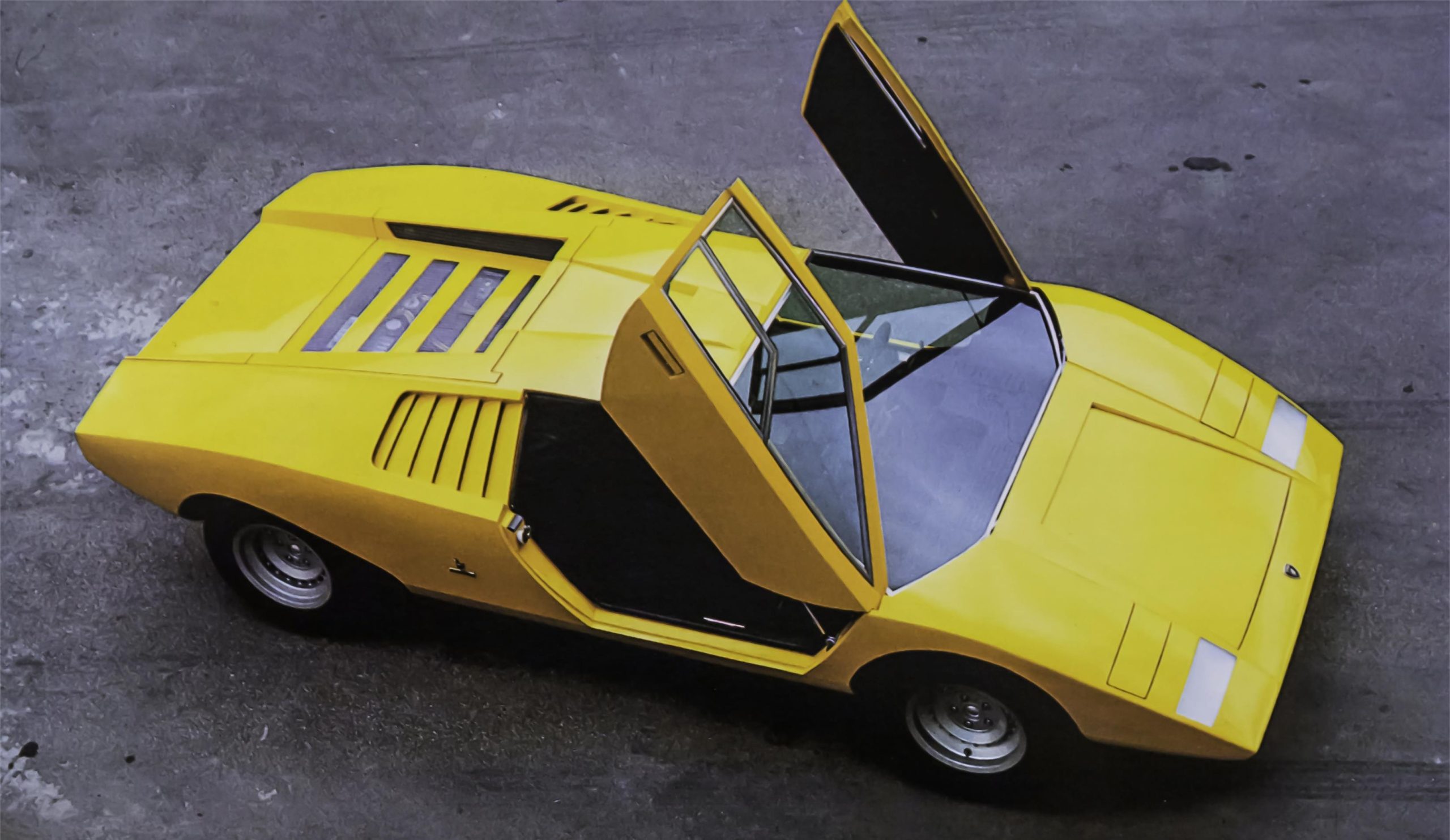
The Lamborghini Countach revolutionized the sports car industry with its introduction in 1974. This Italian masterpiece was produced until 1990, leaving a lasting legacy of innovation and performance. The Countach’s sharp angles and futuristic design were the brainchild of Italian design house Bertone, which defined the ‘Italian Wedge’ aesthetic.
Initially released as the LP 400, the Countach evolved through multiple iterations. The LP400 S variant gained fame through its appearance in the movie “The Cannonball Run.” Improvements and updates continued over the years, with the introduction of the 5-liter engine at the 1982 Geneva Motor Show marking a significant enhancement. This update increased the power output by 50 horsepower over the previous 4-liter engine.
Integrating a rear mid-engine and rear-wheel-drive layout, the Countach was as impressive in performance as it was in style. Its recorded top speed reached 186.4 mph, and it could accelerate from 0 to 60 mph in just 5.6 seconds—impressive figures for the era.
The desirability of the Countach remains high, particularly for early models like the LP 400, known for their pure design before the addition of large mudguards and rear spoilers. A total of 151 units of the LP 400 were produced between 1974 and 1978. With its bold look and high performance, the Countach has become an icon in the automotive world.
History of Lamborghini
The history of Automobili Lamborghini is marked by its foundation, its ascent in the automotive industry, and various significant developments that shaped its identity.
Founding and Early Years
Automobili Lamborghini was formed in 1963 by the Italian industrial magnate Ferruccio Lamborghini. His ambition was to create a refined grand touring car to compete with brands like Ferrari. The company introduced its first model, the Lamborghini 350 GT, in the mid-1960s.
Rise to Fame
Lamborghini rapidly gained prestige with its powerful, stylish, and high-performance vehicles. Noteworthy is the Lamborghini Miura, presented in 1966, which established the standard for high-performance sports cars and is often credited with creating the supercar category.
Key Milestones
- 1963: Ferruccio Lamborghini founds Automobili Lamborghini.
- 1966: The Miura sports car makes its debut, a pivotal moment in the supercar segment.
- 1974: The Countach is introduced, another model emblematic of Lamborghini’s design and engineering philosophy.
- 2003: The Gallardo is launched, offering noteworthy performance and styling while becoming highly influential for the brand’s stability and growth.
Innovations and Technologies
Throughout its history, Lamborghini has continuously introduced advanced technologies and innovative designs to maintain its position as a leading manufacturer of high-performance sports cars.
Engine Developments
Lamborghini engines are renowned for their power and performance. The company has a tradition of naming its cars after famous bulls, which is reflected in the aggressive performance of their engines. For instance, the Lamborghini Aventador’s V12 engine demonstrates a commitment to power combined with advancements such as an innovative stop-and-start system. This system utilises a supercapacitor to quickly restart the engine, optimizing fuel efficiency.
Design Evolution
Design at Lamborghini marries form with function. Each model boasts an aerodynamic silhouette, with ground-breaking features that manage to balance aesthetics with impact, ensuring each vehicle is instantly recognizable. The design is also focused on optimizing airflow to enhance performance. These attributes are epitomized in the Lamborghini Terzo Millennio concept car, which combines an extreme design with an electric powertrain to usher in the next era of the brand’s design philosophy.
Safety and Performance Features
Safety is paramount in the construction of these powerful vehicles. Lamborghini integrates advanced safety technologies without compromising the driving experience. Aventador’s carbon fibre monocoque is an example of blending strength with lightweight materials for increased protection and agility. Furthermore, the brand consistently fine-tunes the stability and handling of its vehicles to match the extraordinary speeds they can achieve, ensuring a secure and reactive drive.

